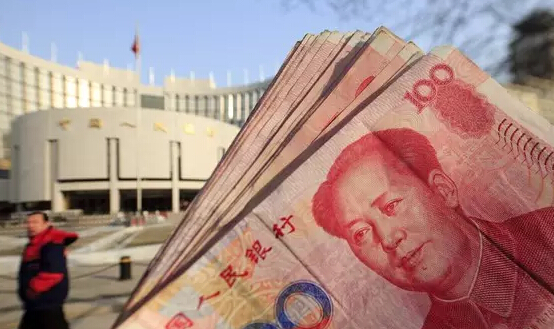
复旦大学经济学院院长张军教授
在去年堪培拉的一个论坛上,沈联涛(Andrew Sheng,中国银监会首席顾问、香港证监会前主席)在回应一些人批评中国的决策不透明时曾风趣地说:“中国是透明的,只是在中文意义上”。这一回答引发了听众的笑声,但大概也是事实。
如果你懂中文并能每天关注中文的媒体,你的确发现,你想知道的东西基本都在那了。但这些东西未必总是明说,需要你去揣摩与推测。因为在中国,即便是那些有影响力的财经主管部门,也不能代表政府的最高决策部门-国务院-来拍板,尤其是针对一项政策出台的时机。在中国,出席官方主办的会议和论坛显得格外重要,阅读官方主流媒体的社论以及高级官员发表的文章也必不可少。在重大政策决策前夕,你或许总是可以从这些看上去杂乱的信息中找到蛛丝马迹。这对于外国人来说简直是不可思议,一头雾水,尽管情况常常是,在一项政策被决定之前,总会有坊间流传的风言风语,而境外的媒体往往也先知先觉。
这些日子以来,人民币的汇率问题弄得满城风雨,成为全球讨论的焦点。不足为怪,作为全球第二大经济体并且在全球经济复苏中扮演着举足轻重的角色,中国货币币值的不稳定自然牵动着投资者的神经。但是,在这当中,危言耸听者众多,大多数人并非冷静思考,更未能真正跟进(甚至误读与曲解了)中国货币当局每一步的政策与做法,从而很遗憾完全看不到一个完整的画面是个什么样子。
呼声甚高的关于做空人民币的言论,虽然再度引发人民币汇率的波动和热钱流出的加快,但这毕竟还只是发生在相对于在岸市场来说微不足道的人民币离岸市场,且处于政府的可控之中。这是因为不仅仅离岸市场规模狭小,连接在岸与离岸市场的通道屈指可数;重要的是,中国10年来在金融市场开放和资本账户可兑换上的决心也摇摆不定,谨慎有加。直至两年前启动了上海自贸区,金融开放上的行动也相当迟缓。这种极其有限的金融开放既可以解释造成人民币汇率动荡的原因,也反过来给予了中国方面在面对汇率波动时不必手忙脚乱的有利条件。中国的最高领导人公开承认,人民币不存在大幅度贬值的基础。这当然是话中有话。
即使这次国际上不乏做空人民币的投机者,但对中国经济来说,依然难以真正酿成大祸。作为仍然比全球经济增长率高出4个百分点和拥有超过10万亿美元GDP的中国经济,再加上还有超出3万亿等值美元外汇储备和占GDP接近40%的储蓄水平,贸易上每年依然有数千亿美元的顺差,要说中国正在经历汇率危机并将致使中国经济突然坍塌,实在言过其实,过于胆大了。
只要简单回顾一下1997年爆发的东亚金融危机的文献,你就会发现,中国这次所经历的货币动荡完全是意料不到的事件,其原因比结果更不可思议。没有比误解更好的词能来描述这次货币动荡的原因了。过去10年来,中国一直坚持非常谨慎的原则推进金融的改革和开放,在减少政府干预、加强金融监管和更市场化的利率与汇率形成机制上有序推进,并取得可喜进步(坦率地说,中国的央行功不可没)。即便在上海自由贸易区建立人民币国际化的渠道上也煞费苦心设计账户分离的监管机制。从根本上说,这些体制上的改进应该有助于减少金融风险和提高应对风险的能力,实在难以与货币危机的发生扯上干系。
今天应该有足够的证据证明去年8月11日中国央行做出的贬值人民币的决定,是基于一个很有说服力的理由而深思熟虑的结果。在有望被IMF考虑把人民币纳入SDR篮子之前,央行希望在朝着用更市场化的方式来形成人民币汇率方面迈出一步,以示承诺。而且我相信这个举动是正确的。但不幸的是,此举没有得到全球市场的理解和正确解读,反而被当作中国为挽救经济下行压力而大幅贬值本币的孤注一掷的行动。这一猜测在国际金融界迅速形成共识,推升了人民币持续和大幅度贬值的预期。为了稳定预期,12月国家外汇管理局(SAFE)进而提出人民币改用SDR一揽子货币来估值而不再单一地盯住美元。在上海的中国外汇交易中心推出了基于一揽子货币的人民币汇率指数。但这些用心的指引看上去并不那么管用,离岸市场沽空人民币的预期依然持续升温,人民币再度处于贬值的巨大压力之下。一时间,大有中国货币当局的这个努力迅速变成自毁长城的武功之虞。是的,或许只有缺少事先良好的沟通或者曲解才能解释这个后果。事实上,由于事先央行没有清晰地表达意图,缺少及时和足够的沟通渠道,外国投资者无法真正领会中国央行去年8月对人民币汇率的突然调整到底是出于什么目的,反而把它误解为一个经济硬着陆这个更大危机的前兆。中国的网络上甚至流传着一个段子,说IMF的总裁也不得不拨打电话给中国领导人来了解那次汇率调整的真相。这也是为什么学者出身的方星海-中国证监会的最年轻的副主席-在刚刚结束的达沃斯论坛上承认中国的金融当局与市场投资者之间缺乏及时和足够的沟通时,会在中国国内引起一片哗然。
当然,说白了,所谓沟通上的欠缺只是对不熟悉中国的决策体制所造成的不适的一种描述,不完全是因为没有沟通,而是沟通方式的差异所致。境外投资者的这一不适应症难以全然归咎于中国的央行。说句公道话,在重大经济决策均由最高领导层拍板决定的体制之下,央行的努力与行动相当出色。2008年如此,今天也如此。
为了防止被国际市场投资者的再度误读,面对国际市场上对人民币汇率的动摇,中国的央行近期在维护汇率稳定的政策设计上可谓煞费苦心,尽量不再释放过强的货币宽松信号以免误导国际市场。这些日子,由于央行出手稳定人民币汇率已造成银行间的流动性趋紧,而且按照惯例,中国的春节来临,中国国内市场对流动性的需求将处于高位,市场预计央行将会选择降准来提供大量的流动性。但这一次央行可谓用心良苦,依然回避了降准而采用了非常规性的手段(如FLM、 SLO、SLF和逆回购等公开市场操作)来释放流动性,使回购利率创下十年来的新低。
这说明,即使外部的投机者虎视眈眈,中国的央行并没有乱了阵脚,依然有足够的回旋余地。再明显不过,你如果真能跟进这段时间以来所发生的一系列事件的前因后果并能学会欣赏中国央行的作为,中国当前的货币动荡算不上是一场货币危机。但即使这样,中国的领导人一定会要求他们的货币当局和金融监管者认真反思过去的做法有哪些不妥并加以矫正。放眼未来,人们大可不必对人民币的汇率前景过于悲观,但依然有理由担心在这次货币动荡之后,中国是否会在金融开放和人民币国际化上有所退缩。谁知道呢?

China’s Crisis of Miscommunication
SHANGHAI – At a forum in Canberra last year, Andrew Sheng quipped, “China is transparent, but only in the Chinese sense.” The statement provoked laughter among those who view China’s decision-making processes as opaque; but it was laughter born of the recognition that Sheng was right. In the run-up to a major policy decision in China, editorials by high-ranking authorities in major publications, as well as reports and communiqués from official forums and meetings, almost always provide clues about what will happen. You just have to know how to read them.
That is easier said than done, at least for foreign media, whose struggle to anticipate China’s policy moves has fueled much frustration – and even accusations that Chinese decision-making is secretive and unpredictable. This struggle is perhaps most apparent today in discussions about China’s exchange rate.
Many investors interpreted last August’s unexpected devaluation of the renminbi by 1.9% against the US dollar – the first decline following years of steady appreciation – as a last ditch effort by the People’s Bank of China (PBOC) to stave off an economic crash. They thus assumed that it was just the beginning of a protracted policy-induced depreciation. As a result, a wave of investors shorted the renminbi, fueled exchange-rate volatility and drove a sharp increase in capital outflows.
But China is not really on the verge of a currency crisis at all. Given that all of this activity is taking place in the offshore renminbi market, which is small in scale and has only limited connections to mainland China’s financial system – the result of China’s hesitancy about financial-market liberalization and capital-account convertibility – the situation remains controllable. Add to that China’s other strengths – annual GDP of over $10 trillion, a growth rate at least four percentage points higher than the global average, $3 trillion in foreign-exchange reserves, a savings rate of 40% of GDP, and a massive trade surplus – and an exchange-rate crisis seems highly unlikely.
But that does not mean that there are no risks. On the contrary, China has a strong interest in curbing the volatility – and, given China’s centrality to the global economy, so does the rest of the world. The key will be to get markets and policymakers on the same page.
So far, China’s leadership has been quite forthcoming about its plans, declaring publicly that substantial devaluation of the renminbi is not part of its plan. Given the enduring strength of China’s economic position, their words should be taken at face value.
Moreover, Chinese policymakers have shown a clear commitment to minimizing government intervention and promoting a market-oriented approach for setting interest and exchange rates. And the authorities – particularly those at the PBOC – have made significant progress toward this end.
In fact, the devaluation last August was accompanied by the announcement of a more market-oriented mechanism for setting the renminbi’s exchange rate in the interbank market, with the daily fixing rate based on the previous day’s closing price. That move, an important step in the internationalization process, was a prerequisite for the addition of the renminbi to the basket of currencies that determine the value of the International Monetary Fund’s reserve asset, the Special Drawing Right.
But even when China attempted to create a more reliably market-based system, investors’ responses were skewed, with unfounded expectations of a substantial and consistent devaluation fueling speculation in international markets. The subsequent attempt by China’s State Administration of Foreign Exchange to stabilize expectations by declaring that the renminbi would be valued against an undisclosed basket of currencies, instead of just the US dollar, failed to convince them. Short trades continued to rage offshore, putting the renminbi under increasing pressure.
No doubt, China could have communicated its new exchange-rate policy more clearly, a point that Fang Xinghai, Vice President of the China Securities Regulatory Commission, has admitted. But that does not mean that the authorities, especially the PBOC, were being secretive or opaque in their decision-making. The real problem was, as Sheng suggested, a difference in communication style.
Recognizing this disconnect, the PBOC has been working vigorously to prevent further misunderstandings by designing policies that will safeguard exchange-rate stability, while taking care not to transmit any signal that monetary easing is in the cards. Even with inter-bank liquidity strained, the PBOC is refusing to lower the deposit reserve rate to release liquidity – in defiance of market expectations.
Instead, the PBOC is employing unconventional regulatory tools – such as short-term liquidity operations, standing lending facilities, and reverse repurchase agreements – to boost the money supply, driving the repurchase rate to a ten-year low. Clearly, even with external speculators breathing down its neck, the PBOC remains committed to stabilizing the exchange rate, while advancing its market-oriented goals. Investors should take note.
China’s leaders have plenty of challenges ahead, and improved communication with markets could help to overcome them. Fortunately, it seems that China’s leaders recognize this imperative, and are working to meet it. Nonetheless, it is reasonable to wonder whether, if the current currency turmoil endures, Chinese policymakers’ commitment to financial liberalization and currency internationalization will wane. One hopes that it does not come to that.
文章来源:FT中文网;Project Syndicate
 返回顶部
返回顶部